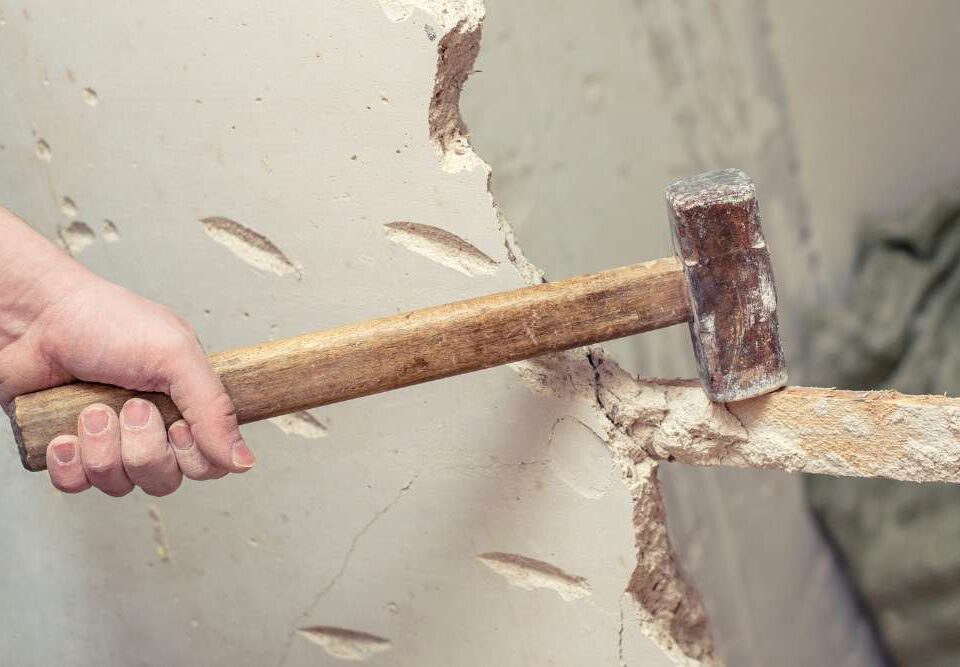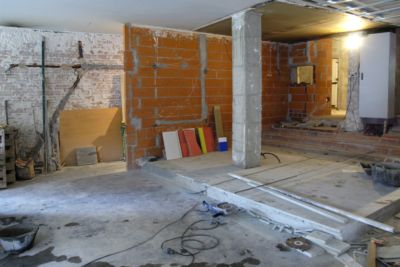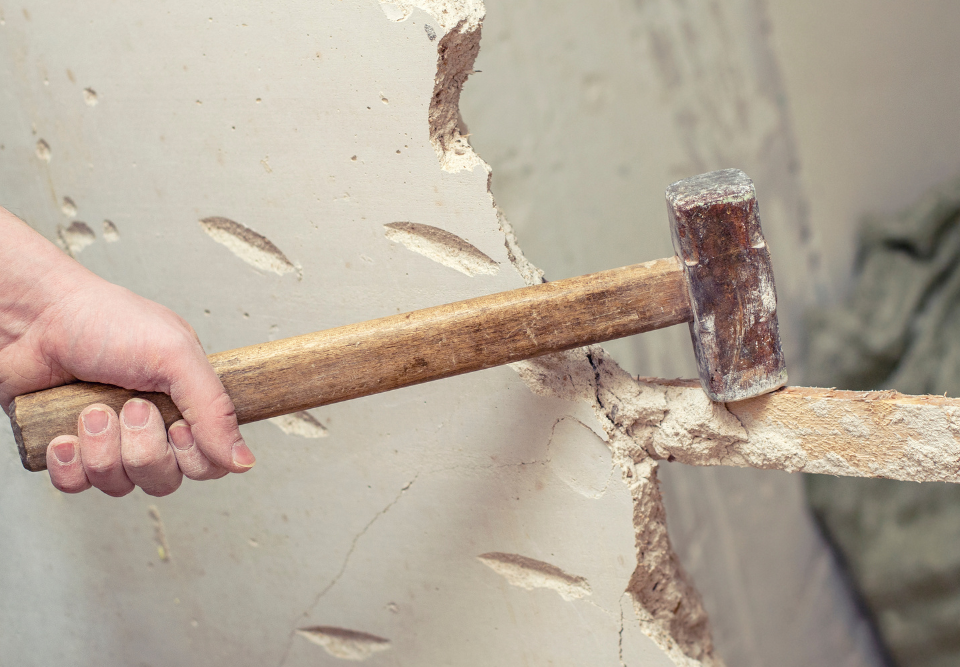
How Deck Removal Can Enhance Your Outdoor Living Area
September 1, 2025
The Role of Demolition Cleanup in Home Remodeling
September 1, 2025How to Handle Demolition Cleanup After a Major Renovation
Clearing Out Construction Debris Efficiently
After a major renovation, the remnants of demolition can feel overwhelming. Fragments of drywall, broken tiles, and remnants of old flooring tend to accumulate quickly, turning a newly transformed space into a cluttered mess. Tackling this debris requires a structured approach, beginning with separating materials based on type and size. Smaller scraps can be bagged for easier transport, while larger pieces may require careful maneuvering to avoid injuries or property damage. Wearing protective gloves, masks, and sturdy footwear ensures that the cleanup proceeds safely. Beyond personal safety, planning the path for debris removal helps prevent damage to walls, floors, and furniture, preserving the integrity of the renovated area.
Efficiency in cleanup hinges on having the right tools and a clear plan. Using wheelbarrows, heavy-duty trash bags, and temporary storage bins can make the process more manageable. Scheduling periodic removals during the renovation rather than waiting until the end reduces the risk of clutter accumulating in dangerous or inconvenient areas. By segmenting debris into categories such as recyclable materials, hazardous waste, and general trash, the process not only becomes safer but also more environmentally responsible. Ultimately, structured planning and the right equipment transform what could be a daunting task into a manageable and even satisfying stage of renovation.
Safeguarding Your Space During Cleanup
Renovation often leaves surfaces and corners vulnerable to accidental damage. Protecting your floors and remaining fixtures before beginning demolition cleanup is crucial. Covering floors with durable sheets or tarps prevents scratches and stains from dust, paint, or debris. Doors, windows, and furniture should be shielded to maintain the pristine condition of your renovated area. Thoughtful preparation ensures that while the remnants of demolition are being removed, the space you’ve worked hard to improve remains undamaged and ready for final touches.
Creating designated zones for debris collection can further reduce risks. Assigning specific areas for heavy materials versus lighter waste prevents clutter from spreading and makes it easier to identify hazards. Clear signage or barriers may also help family members or coworkers avoid accidental contact with sharp or unstable materials. By combining protective measures and organized zones, the cleanup process becomes not only safer but more efficient. This attention to detail minimizes the chances of costly accidents, keeping the renovation’s final presentation intact while swiftly removing unwanted debris.

Handling Hazardous Materials Carefully
Certain demolition materials can pose health risks if not handled properly. Items like old insulation, asbestos-containing tiles, lead-based paints, and chemical residues require special precautions. Wearing protective gear, including respirators and heavy-duty gloves, is essential. Proper identification of hazardous materials is the first step in ensuring safety. Once identified, these materials should be separated from general debris and handled according to local regulations. Never attempt to dispose of potentially hazardous materials in regular trash bins, as this can create serious safety and legal issues.
Disposal of hazardous debris often involves specialized services or drop-off locations. Keeping these items isolated prevents accidental exposure and cross-contamination. Storing hazardous materials temporarily in labeled containers ensures that anyone assisting in the cleanup is aware of the risks. Additionally, maintaining proper ventilation during cleanup reduces dust accumulation and inhalation of harmful particles. By taking careful measures and following recommended disposal procedures, you protect both yourself and others while maintaining compliance with environmental safety standards, turning a potentially dangerous cleanup into a controlled and manageable task.
Renting or Using the Right Equipment
Demolition cleanup is labor-intensive and requires the appropriate tools to make the process smoother. From sturdy wheelbarrows and heavy-duty trash bags to shovels, brooms, and gloves, having the right equipment minimizes effort while maximizing efficiency. For larger debris like broken countertops or beams, dollies and carts can facilitate safe transport without straining your body. Skipping proper tools can turn cleanup into a frustrating experience that drags on and risks injury, making preparation key to a successful demolition aftermath.
In some cases, renting dumpsters or hiring professional debris removal services may be the most practical solution. Large volumes of waste from major renovations often exceed what can safely fit into household trash bins. Utilizing temporary dumpsters placed near the renovation site ensures that debris is collected in one centralized area, reducing trips back and forth and keeping the property organized. Professional equipment also ensures safer handling of bulky items, which might otherwise cause property damage or personal injury. A combination of appropriate tools and strategic planning guarantees that cleanup moves efficiently while preserving safety and order.
Segregating Waste for Disposal and Recycling
Sorting demolition debris into categories such as metal, wood, concrete, and general waste streamlines the disposal process. This practice not only makes removal easier but also contributes to environmentally responsible waste management. Many materials from renovations can be recycled or repurposed, reducing landfill contributions and promoting sustainability. For instance, metal fixtures and wiring can be collected separately for scrap recycling, while wood can be chipped or reused in future projects. Establishing clear sorting zones during cleanup ensures that each type of material is directed appropriately.
In addition to recycling benefits, segregating waste reduces clutter and enhances safety. Mixing sharp objects with lighter debris can lead to accidents, so separating materials based on risk levels is crucial. Labeling bags or containers with material type helps anyone assisting with cleanup quickly identify where each item should go. This methodical approach not only streamlines debris removal but also instills a sense of order, making what could otherwise be a chaotic task more systematic and satisfying. By thinking ahead about disposal and recycling, you handle cleanup responsibly while safeguarding your home.
Managing Time and Labor Effectively
Demolition cleanup can quickly become overwhelming if approached haphazardly. Breaking the process into stages allows for better time management and reduces fatigue. Assigning tasks based on complexity or physical effort ensures that the team works efficiently. Lighter, quicker tasks can be tackled first to clear walkways and immediate work areas, while heavier items are managed systematically. Scheduling cleanup sessions in blocks rather than attempting to finish all at once prevents burnout and maintains productivity.
Coordinating labor effectively also involves communicating clear responsibilities. Each participant should know which areas to focus on and which materials to handle. This prevents duplication of effort and keeps momentum steady throughout the cleanup. Regular short breaks ensure safety and maintain energy, particularly when handling large, heavy, or sharp debris. By balancing tasks, assigning roles, and maintaining realistic expectations, cleanup becomes a manageable phase of your renovation. Strategic planning and teamwork ensure the work is completed thoroughly, quickly, and safely, leaving your space prepared for final touches.
Minimizing Dust and Debris Spread
Renovation debris often generates a significant amount of dust, which can infiltrate living areas and cause irritation or damage. Controlling dust is essential for maintaining a clean and safe environment. Using tarps, plastic sheets, or temporary barriers around work zones helps confine dust and prevent it from spreading. Additionally, dampening surfaces or debris slightly can reduce airborne particles, making cleanup easier and healthier. Cleaning tools such as brooms, vacuums, and dustpans further assist in maintaining a tidy environment throughout the process.
Attention to airflow and ventilation also plays a critical role. Opening windows or using fans can help remove dust from the work area, preventing accumulation on furniture or floors. Strategically covering HVAC vents ensures that dust does not circulate throughout the home. By implementing these dust-control measures, you create a safer, cleaner environment for both cleanup crews and residents. This proactive approach preserves indoor air quality and ensures that your newly renovated space remains welcoming and ready for occupancy.
Coordinating with Professional Services
While some demolition cleanup can be managed independently, involving professional services can simplify the process significantly. Experts have the equipment, manpower, and experience to remove debris efficiently and safely. They can also manage hazardous materials or large volumes of waste that might overwhelm a homeowner. Hiring professionals reduces the physical strain, speeds up cleanup, and provides assurance that all debris is properly handled and disposed of according to regulations.
Professional services also bring logistical advantages. Coordinating debris pickup schedules, ensuring the right containers or dumpsters are available, and maintaining clear pathways during cleanup are handled seamlessly. This allows homeowners to focus on other aspects of their renovation without distraction. Additionally, professionals can identify materials that may be recycled or donated, contributing to environmentally responsible disposal practices. By combining expertise, resources, and safety protocols, professional services turn demolition cleanup into an organized, efficient, and less stressful endeavor.
Handling Large or Bulky Items Safely
Major renovations often leave behind oversized items such as cabinetry, doors, or countertops. Removing these safely requires proper planning and teamwork. Avoid attempting to lift or move bulky objects alone, as injuries can occur. Instead, enlist assistance or use equipment designed for heavy lifting. Clear pathways and remove obstacles to prevent accidents and ensure a smooth removal process. Prioritizing safety reduces risks and helps maintain the integrity of the surrounding area.
Using protective gear such as gloves, steel-toed shoes, and back supports is crucial when handling heavy debris. In addition, mapping out a path for moving large items before attempting to lift them prevents last-minute obstacles or hazards. Keeping communication clear among those involved ensures coordinated efforts and minimizes accidents. Large debris should be disassembled if possible, making transportation easier and reducing the chance of damage. Careful attention to detail transforms a physically challenging part of cleanup into a controlled and safe process.
Final Touches and Site Inspection
Once the bulk of debris is removed, the focus shifts to fine-tuning the space. Sweeping, vacuuming, and inspecting corners ensure no hazardous materials remain. Checking walls, floors, and remaining furniture for scratches or damages ensures that the renovation finishes on a pristine note. This stage may also involve minor repairs or touch-ups to paint, trim, or fixtures, providing a polished and complete result.
A thorough site inspection confirms that all debris has been removed and the area is ready for use. Walking through each space methodically helps identify overlooked waste or dust accumulation, ensuring safety and cleanliness. Any reusable materials can be properly stored or recycled, preventing future clutter. By treating this final phase with the same attention as earlier stages, the renovation concludes on a professional note, leaving the space clean, safe, and ready to enjoy.
Conclusion
Cleaning up after a major renovation can be overwhelming, but proper planning and methodical execution transform the task into a manageable and even rewarding experience. Breaking the cleanup into stages, safeguarding the area, and segregating waste make the process more efficient and environmentally responsible. Implementing dust control measures, handling hazardous materials carefully, and managing large items safely ensures that the space remains both safe and functional. Coordination, whether done independently or with professional services, guarantees that every corner of the renovated area receives attention.
For a thorough and stress-free solution to demolition debris, North Bay Junk Removal in Santa Rosa, CA provides expert junk removal services. Their experienced team handles everything from hazardous materials to bulky renovation remnants with professionalism and care. By calling 707-478-6817, homeowners can ensure that every piece of debris is removed efficiently, leaving a pristine and safe environment ready to enjoy. Their approach combines speed, reliability, and environmental responsibility, making them an ideal partner for any renovation cleanup project.




